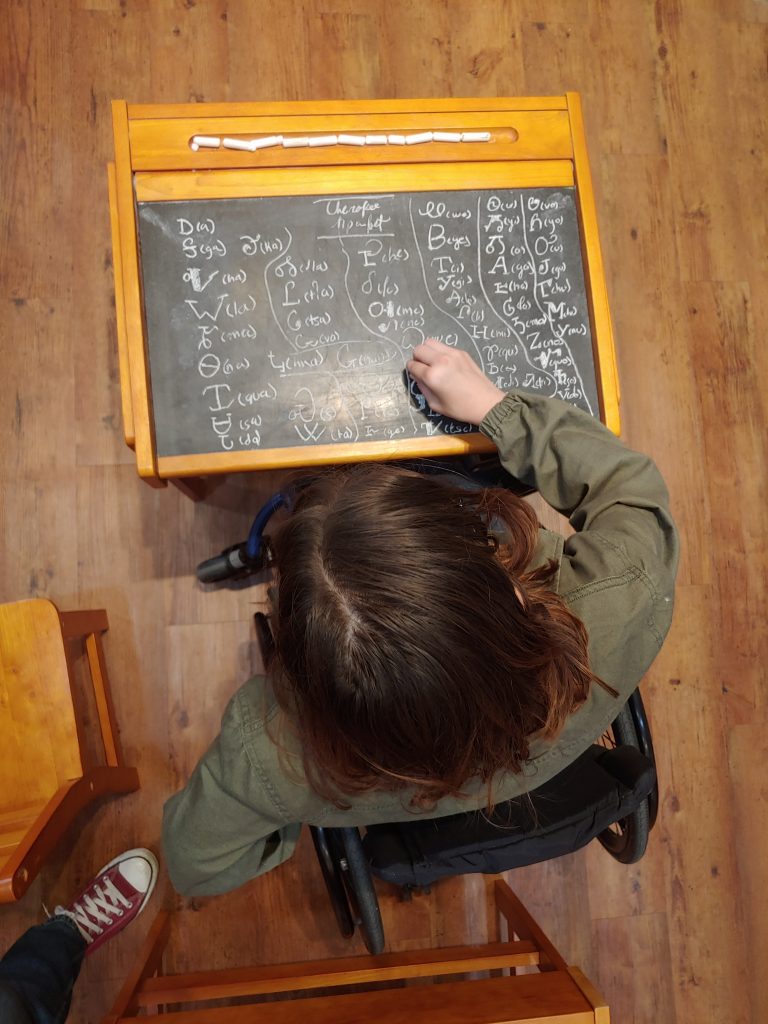Cherokee Chief John Ross was the principal chief of the Cherokee Nation during a terrible time in our history, the Indian Removal Act and the Trail of Tears. He was unable to prevent the forced relocation and many, including his own wife, passed away on the Trail of Tears. The John Ross Museum is set in an old schoolhouse with two rooms full of top-quality informational displays about his life. There are a few artifacts enclosed in display cases and some interactive elements as well. My favorite was sitting at classroom desks and practicing writing letters on chalkboard-topped school desks. There is a community cemetery behind the museum with Chief John Ross’s gravesite. It is up a hill with a rough gravel path, but I believe it is possible to drive much of the way.
Located outside Tahlequah, in Park Hill, the John Ross Museum is extremely wheelchair accessible, as seems to be the case with every public site owned by the Cherokee Nation. Remarkable really. A long, smooth ramp and path lead to the entrance and everything inside is easy to maneuver as well—even the restrooms. There is off-street parking with a paved placard space that lets you avoid the larger gravel parking section. Since our Airbnb was in Tulsa, exploring parts of the Cherokee Nation museums was a great way to spend a Saturday.
I really enjoyed this small but mighty museum, and I hope you will too. When you’re ready to explore the John Ross Museum, just head to 22366 S 530 Rd in Park Hill, Oklahoma.






